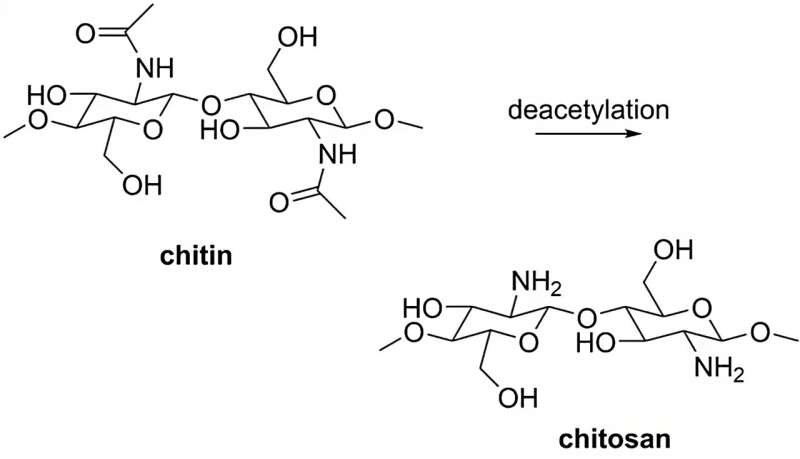This article has been reviewed according to Science X's editorial process and policies. Editors have highlighted the following attributes while ensuring the content's credibility:
fact-checked
peer-reviewed publication
trusted source
proofread
Chemists recycle shrimp waste as catalyst for hydrogen generation

Flexible spheres of the biomolecule chitosan, made from shrimp waste, can be used for catalysts that generate hydrogen gas from borohydride salts. In a paper in Green Chemistry, a research team at the University of Amsterdam (UvA) shows how the spheres can "breathe out" hydrogen bubbles without breaking. This is an important step towards practical and safe hydrogen storage and release units.
Since 2020, the Heterogeneous Catalysis & Sustainable Chemistry group at the UvA's Van 't Hoff Institute for Molecular Sciences has been working on using alkali metal borohydride salts as future hydrogen carriers. These solid salts can be stored safely in air under ambient conditions and release hydrogen gas only when reacting with water. However, controlling the hydrogen release, and thus preventing runaway reactions, is challenging.
One solution is to stabilize the solution with a base, and control the hydrogen release by using a catalyst. The UvA team, led by Prof. Gadi Rothenberg, is developing such catalysts in collaboration with the Austrian Competence Centre for Tribology (AC2T) and the company Electriq Global.
Hydrogen destroys catalyst particles
Finding potential catalysts is easy, but getting them to work long enough to be commercially viable is not. The combination of high reaction pH and a continuous release of hydrogen bubbles destroys traditional catalysts within a few days. For instance, the team succeeded in designing highly active and selective cobalt-containing catalyst particles. The high activity, however, results in high volumes of hydrogen that rapidly destroy the particles.
The breakthrough came during a so-called Friday Afternoon experiment when MSc student Jeffrey Jonk and Ph.D. student Fran Pope decided to try and encapsulate cobalt particles in chitosan spheres. Chitosan is a natural polymer that can be produced from chitin, the main component of insect exoskeletons and crustacean shells. It is a biodegradable, biocompatible material that is widely available on multi-ton scale, produced mostly from shrimp and crab shell waste.
The recurring amine groups on the chitosan backbone make it highly soluble in aqueous acidic solutions but sparingly soluble in basic ones. Chitosan spheres can therefore be relatively easy produced by dropping the liquid chitosan into a basic solution. A crucial property of the chitosan spheres is their flexibility which enables them to expand during the generation of hydrogen. They can thus "breathe out" the hydrogen bubbles without breaking. And since they are made at high pH, the basicity of the borohydride solution poses no problem.
Real-life potential for chitosan-based catalysts
The team tested the new catalysts in batch and continuous modes, monitoring the reactions by measuring the flow of hydrogen generated. A few mm-sized spheres loaded with 7% cobalt were sufficient to generate 40 mL hydrogen per minute in a continuous reactor for two days, showing the real-life potential of this new catalyst.
According to Rothenberg the work highlights the importance of catalyst stability as a research focus. "Many papers focus on activity and selectivity, because journals have become focused on publishing spectacular results," he says. "Yet if you look at the chemical industry, none of these 'spectacular' catalysts are used in practice. The reason is that running a successful reaction for a few hours, or even a few days, means nothing for large-scale processes. A real catalyst must work for months and years to be economically viable. We're not there yet."
More information: Frances Pope et al, From shrimp balls to hydrogen bubbles: borohydride hydrolysis catalysed by flexible cobalt chitosan spheres, Green Chemistry (2023). DOI: 10.1039/D3GC00821E
Journal information: Green Chemistry
Provided by University of Amsterdam





















